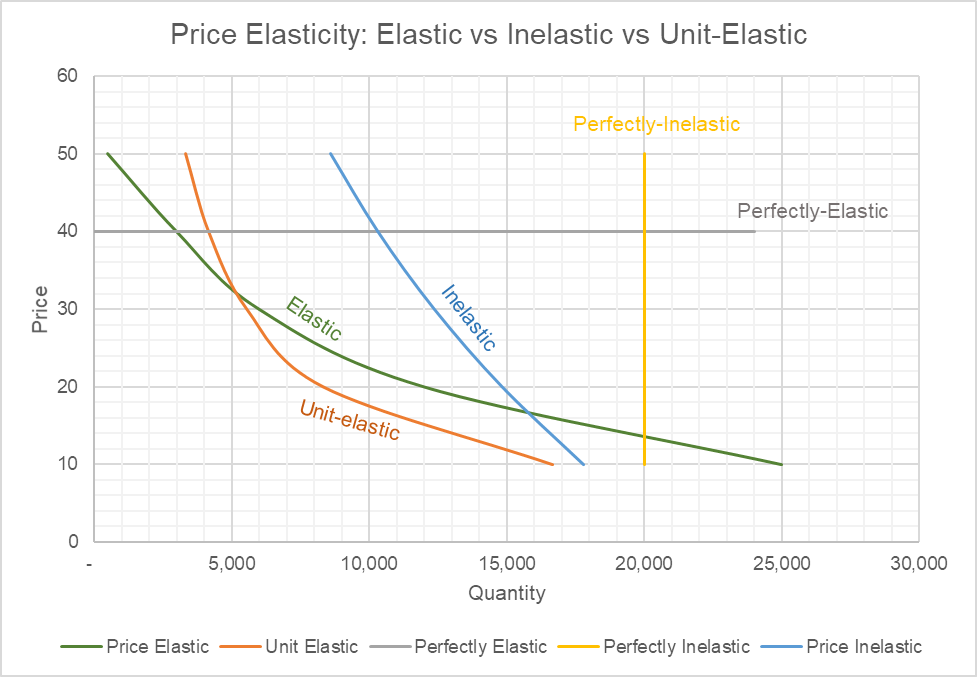Types of Elasticity of Demand
Elasticities of demand are measures of responsiveness of quantity demanded of a product to different determinants of demand i.e. price, income, prices of substitute and complements, etc. The most popular elasticity of demand is the price elasticity of demand.
There are three main types of elasticities of demand: the price elasticity of demand (so popular that it is generally referred to as simply elasticity of demand), income elasticity of demand and cross elasticity of demand.
There are a range of factors which affect quantity demanded either directly or indirectly. The product’s own price is the most significant factor. Quantity demanded increases if the price of the product decreases and vice versa. The extent of this relationship between quantity demanded and price is measured by price elasticity of demand. Other significant demand determinants include income level of the consumers, the prices of substitute goods or complementary goods, etc. The income elasticity of demand measures responsive of demand to changes in income while the cross elasticity of demand tells us how demand changes when the prices of substitutes or complements changes.
Price Elasticity of Demand
Price elasticity of demand is represented by Ed and it is calculated using the following formula:
$$ \text{E} _ \text{d}=\Delta \text{QQ}\Delta \text{PP}=\Delta \text{Q}\Delta \text{P}\times \text{PQ} $$
Where ΔQ is the change in quantity demanded, ΔP is the change in price and Q and P stands for quantity demanded and price respectively at the point at which elasticity is being determined.
Because quantity demanded decreases with increases in price, price elasticity of demand for normal goods is negative. However, the negative sign is usually ignored, and price elasticity is quoted as a positive number.
When the price elasticity is greater than 1, equal to 1 or lower than one, the product is said to have elastic, unit-elastic and inelastic demand curve respectively.

Income Elasticity of Demand
Income elasticity of demand is calculated by dividing the percentage change in quantity divided by the percentage change in income.
$$ {\text{E}^\text{d}} _ \text{M}=\Delta \text{QQ}\Delta \text{MM}=\Delta \text{Q}\Delta \text{M}\times \text{MQ} $$
Where ΔM and M stand for change in income and current income respectively of the consumers.
If the quantity demanded increases with increase in income, the income elasticity of demand is positive, and the product is a normal good. However, when the quantity demanded decreases with increase in income, the income elasticity is negative, and the product is an inferior good.
Cross Elasticity of Demand
Cross elasticity of demand is calculated by dividing the percentage change in quantity demanded by the percentage change in price of a related good
$$ {\text{E}^\text{d}} _ \text{R}=\Delta \text{QQ}\Delta \text{RR}=\Delta \text{Q}\Delta \text{R}\times \text{RQ} $$
Where ΔR and R stand for change in price and current price respectively of the related good.
If the quantity demanded of a product increases with increase in price of the related good, the cross elasticity of demand is positive, and the products are substitutes. Similarly, if the quantity demanded decreases with increases in price of the related good, the cross elasticity of demand is negative, and the products are complements.
by Obaidullah Jan, ACA, CFA and last modified on